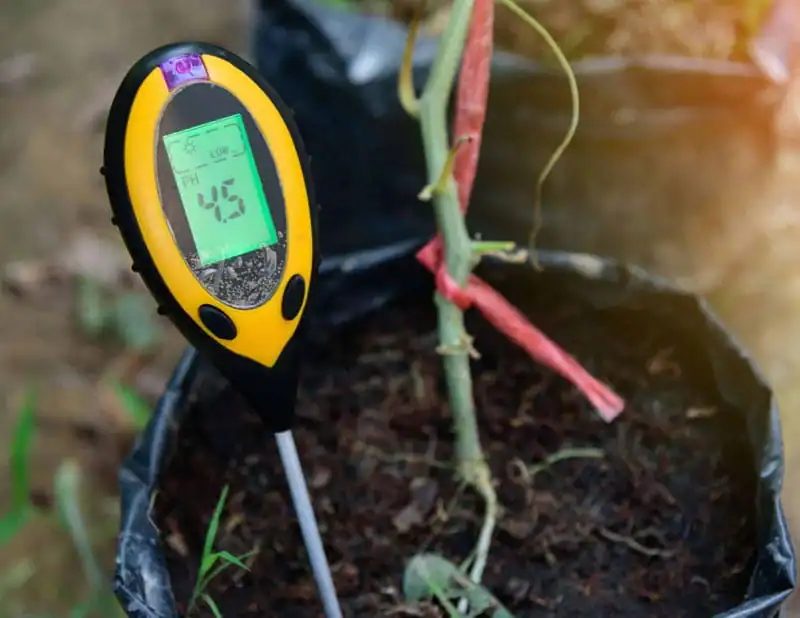While not directly related to Salt, our garden articles mention soil pH frequently, so I wanted to gather some information about that topic in a single article. When your soil has a pH value that is too high or too low, it can limit the availability of certain nutrients and lead to stunted growth and poor yields.
In a few areas of the country, there are places where salts accumulate, causing issues with plant growth due to soil salinity. The more common problem though is that soil is too alkaline or too acidic for robust garden growth. A comprehensive soil test is really the only way to determine if these issues affect your own growing area. Also, you may have isolated areas with problems – a common example is that the soil underneath evergreen trees is too acidic, so most plants (like grass) will not grow there.
There are many ways to balance your dirt’s pH, from adding organic matter to the soil to using specific types of fertilizers and soil amendments. By taking a proactive approach to soil health including soil pH, gardeners can create a thriving, productive garden that supports healthy plant growth and yields. This article presents details about how to approach the issue and what to do about it.
What is Soil pH?
The term ‘pH’ is a measure of the acidity or alkalinity of any material (water, food, cleaning products, the water in your pool, etc). It is measured on a scale of 1 to 14, with 7 being neutral. Soil also has a pH that is measurable on this scale.
As described in this Australian Government post, a pH below 7 indicates acidic soil, while a pH above 7 indicates alkaline soil. pH is an important factor in determining the health of plants, as it affects the availability of nutrients in the soil.
The Importance of Soil pH
Soil pH plays a crucial role in the growth and development of plants. Different plants have different pH requirements, and if the dirt pH is not suitable for a particular plant, it will not be able to absorb the necessary nutrients from the soil.
For example, blueberries require acidic soil with a pH between 4.0 and 5.5, while most vegetables prefer slightly acidic soil with a pH between 6.0 and 7.0.
Factors Affecting Soil pH
Several factors can affect soil pH, including:
- Parent Material: The type of rock or sediment that the soil was formed from can influence its pH.
- Climate: Rainfall and temperature can affect the rate at which pH changes over time.
- Organic Matter: The decomposition of organic matter can release acids into the soil, lowering its pH.
- Fertilizers: Some fertilizers can increase soil acidity, while others can increase alkalinity.
By testing the pH of your soil and making adjustments as necessary, you can ensure that your plants have access to the nutrients they need to thrive.
Why Test Your Soils pH Level
Before planting your garden, it’s important to test your soil’s pH to ensure your plants have the best chance of thriving. While certain plants might tolerate higher or lower pH values, understanding your starting point can help you evaluate what is going on if individual plant species are struggling.
Soil pH affects the availability of nutrients in the soil, which in turn affects the growth and health of your plants.

How do You Test Soil?
There are several methods for testing soil, including soil pH –
- Soil Tests: Soil tests are the most accurate way to test pH. They involve sending a soil sample to a lab for analysis. The tests can also offer information on soil nutrients such as extractable calcium, magnesium, potassium and phosphorus, and organic matter content. While soil test services can be purchased online, checking with your local county extension office or State University website might yield testing services that are somewhat cheaper and more tailored to the soils in your local area.
If you really are only interested in testing for soil pH, DIY methods include:
- Test Kits: Soil pH test kits are available to test your dirt’s pH at home. They typically come with a mixing card and indicator powder system. To use, mix a soil sample with water, add the indicator dye, and compare the color to the chart provided. The version I have makes you pour the powder into a tiny area that is right next to where you are supposed to add clear water without the powder in it. Ugh … it is a pain, how about some easier methods?
- Digital Meters: There are digital devices like the one shown in the featured image that measure pH, and usually a couple other useful pieces of information like soil moisture.
- Test Strips: Soil pH test strips are another option for testing pH at home. They work similarly to test kits, but instead of a lot of fussy steps, you simply match the color of the strip to the colors on the packaging. pH test strips are widely available at garden centers and online. Note that these tests are considered a lot less accurate than a lab based test. They can quickly tell you though, the general category of acid/neutral/alkaline. They also let you quickly test different areas of your yard, such as your vegetable garden or underneath the Spruce tree.
- Litmus Paper: The DIY method is to just use litmus paper – remember it from your first day in science class? I’m going to show you how to do this method because it is simple and is the cheapest of all the choices.
Measuring Soil pH with Litmus Paper
This method requires these items:
- A clear container: glass or plastic, preferably the same width from bottom to top. You should be able to cover the top with your palm and shake the container without spraying dirty water all over. If you can’t find a container like my vase, you can also use a clear jar with a lid.
- Soil from you garden: Pick you area of concern, such as in you vegetable raised bed, near your hydrangeas or underneath your evergreen tree. Dig down at least 2 to 3 inches to collect your soil.
- Water: Usually tap water is fine. Test the pH of your water first to make sure you know that you are starting with water close to 7.0 (neutral) pH. If you are on a well or other system where your pH is not neutral, you can use bottled water for this test.
- Litmus Paper: Geeky people like me who have saltwater aquariums might have litmus paper on hand, but I realize that this is something you might need to buy – you might be able to find some at the hardware store or pool supply company, but I’ll just put the link below.
Prepare your Soil
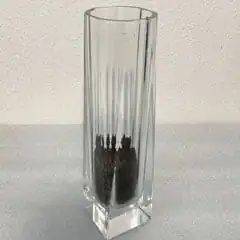
Fill your container about 20 to 25% full with soil. It can be loose – you don’t need to pack it down. My vase is 7″ deep inside so I used about 1.5″ of soil.
Now add water to near the top of the container. Put your palm over the top (or screw the lid on your jar), shake and invert.
Mix the soil with the water for about 10 seconds. It should look like this: fairly opaque.

Now let your muddy water sit for at least 20 to 30 minutes. This has two purposes – the water will take on the soil pH, and the soil will filter down to the bottom of the container, leaving clearer water for the testing step.

Once your soil and water have separated somewhat, it’s time to test. Immerse a piece of litmus paper in the water, trying to avoid any solid material floating on the surface. Litmus paper works fast: just dip and remove.
The color will develop in the paper right away if the soil is either acidic or alkaline.
Compare your wet piece of paper to the color chart on the side of your litmus paper container. My soil is neutral.
Yes, I know. This is a boring result, but now I don’t have to balance my pH.
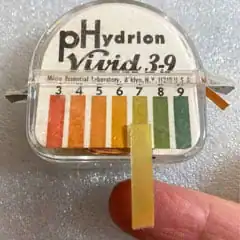
If you are concerned that your litmus paper isn’t working, try testing a piece with some kind of citrus juice. A lemon or orange juice will give you an acidic reading. For instance, my tangerine juice gives me a reading of 4.5 pH.
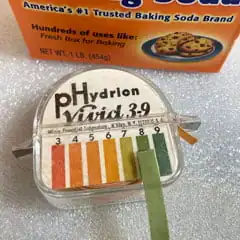
Testing a solution of baking soda (a salt!) in water should give you a reading like this one: around 8.0 pH.
A package of 80 Litmus strips in a convenient package - just tear one off. pH testing can apply to more things than soil, so you can use these for testing the pH of any liquid. Chart reads from a pH of 1 (very acidic) to 14 (very alkaline).
Balancing Soil pH
Maintaining the correct pH level in garden soil is essential for healthy plant growth. Based on your soil testing, if you need to adjust your soil pH, here is some guidance.
Acidic Soil
If the soil pH is below 7.0, it is considered acidic. Most plants are just fine with mildly acidic soil, but values below 6.0 can restrict the availability of essential nutrients to plants, leading to stunted growth and poor yields.
To raise the pH level, gardeners can add Garden Lime to the soil. Garden lime, which sometimes is also called agricultural lime, is primarily composed of calcium carbonate (calcitic lime) or calcium and magnesium carbonates (dolomitic lime). Sometimes gardeners refer to adding garden lime as “sweetening the soil”.
The best time to apply lime to the soil in the fall or winter, allowing it to break down and neutralize the acidity over time.
Alkaline Soil
Soil with a pH above 7.0 is considered alkaline. Once again, mildly alkaline soil up to about 7.5 is within many garden plants tolerance range. Above 7.5, Alkaline soil can limit the availability of nutrients to plants, leading to poor growth.
To lower the pH level, gardeners can add sulfur to the soil. Sulfur is available in different forms, including aluminum sulfate and elemental sulfur.
Sulfur also needs some time to do it’s work, so a fall/winter application is also a great time to apply it.
Neutral Soil
Soil with a pH of 7.0 is considered neutral. Neutral soil is ideal for most plants as it allows for the optimal availability of nutrients, but within the range of 6.0 to 7.5 the pH is considered to be acceptable for most plants.
Other Soil Amendments
In addition to lime and sulfur, other soil amendments can also be used to adjust the pH level of garden soil. Wood ash, for example, can raise soil pH. It is important to use these amendments carefully and in the correct amounts, as they can have a significant impact on pH. Some gardeners like to use spent coffee grounds to gently and naturally make the soil more acidic – and creatures like earthworms even benefit from consuming the used coffee grounds!
How Salt Affects Soil pH
When salts accumulate in the soil, it can lead to an increase in soil pH, making the soil more alkaline. This can be detrimental to plant growth, as many plants require a slightly acidic pH level to thrive. As I mentioned above, this is not a common problem, but it does affect certain areas, so I will address the issue briefly.
The primary way that salt affects soil pH is by interfering with the uptake of nutrients by plants. High pH levels can lead to nutrient deficiencies, as many essential nutrients become less available to plants when the dirt’s pH is too high. This can result in stunted growth, yellowing leaves, and poor crop yields.
If you are concerned about the buildup of salts in your soil or have reason to suspect that condition, be sure that the lab-based soil test you select has the ability to test for salt buildup as this kind of testing is not part of the typical test results.
Identifying Salt Buildup in Soil
One way to identify salt buildup in soil is to look for white or yellow crusts on the soil surface. This can be a sign that the soil has become too salty, and the excess salts are accumulating on the surface.
Another sign of salt buildup can poor plant growth, especially if the plants are showing signs of nutrient deficiencies.
Reducing Salt Buildup in Soil
There are several ways to reduce salt buildup in soil and maintain a healthy soil pH level. One of the most effective ways to reduce salt buildup is to leach the soil with water. This involves applying large amounts of water to the soil to flush out the excess salts.
Another way to reduce salt buildup is to add organic matter to the soil. Organic matter can help to improve soil structure and increase the activity of soil organisms, which can help to break down excess salts in the soil.
It is also important to monitor the pH level of the soil regularly and adjust as necessary. Adding soil amendments such as sulfur or acidifying fertilizers can help to lower pH levels and maintain a slightly acidic soil environment that is conducive to plant growth.
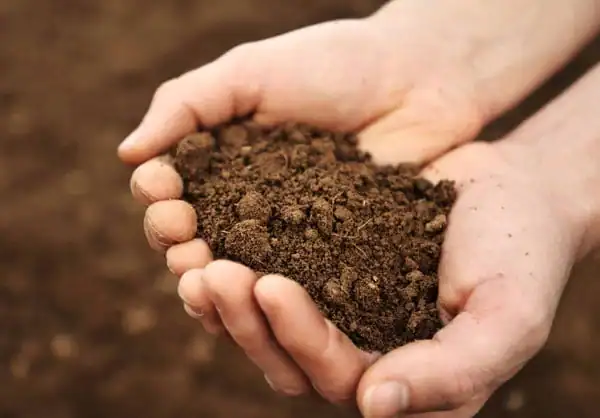
Maintaining Balanced Soil pH
Maintaining balanced soil pH is essential for healthy plant growth and a thriving garden. Here are some tips to help you keep your pH in check.
Testing Soil pH Regularly
Regularly testing your soil pH is crucial to maintain a healthy garden. You can use a soil testing kit to determine the pH level of your soil. The ideal pH range for a wide variety of plants is between 6.0 and 7.5. If your pH is too high or too low, you can adjust it using the following methods.
Using Nutrient-Dense Organic Materials
Adding organic matter to your soil is an excellent way to balance soil pH naturally. Organic matter such as compost, manure, and leaf litter contains essential nutrients that help maintain a healthy soil food web. Nutrient-dense organic materials can also help increase pH if it is too low.
Compost and mulch are excellent soil amendments that can help maintain a balanced soil pH. Compost is rich in nutrients and beneficial microorganisms that help improve soil health. Mulch helps retain moisture in the soil and prevents soil erosion.
Using Peat Moss
Peat Moss is a natural product that can help lower pH. Due to it’s cost and the concern that some of it is not harvested in a sustainable manner, some people opt to just use it around certain plants like hydrangeas. It is highly effective when used as a ‘side dressing’ – in other words spread around the base of the target plant and gently worked into the soil being careful not to damage any roots or stems.
Green Manure Crops
Green manure crops are plants grown specifically to improve soil health. These crops can help maintain a balanced soil pH by adding organic matter and nutrients to the soil. Some popular green manure crops include clover, alfalfa, and buckwheat. As you can tell from the word ‘crops’ this method tends to be used over wide areas.
Avoiding Chemical Fertilizers
Chemical fertilizers can disrupt the soil food web and harm beneficial microorganisms. Overuse of chemical fertilizers can also lead to soil acidity and imbalance. It is best to avoid chemical fertilizers and opt for natural amendments such as compost and organic matter.
Plants that Thrive in Different Soil pH Levels
Acid-Loving Plants
Some plants prefer acidic soil, with a pH level below 7.0. Acid-loving plants require high levels of potassium, nitrogen, magnesium, iron, phosphorus, and manganese to thrive. Examples of acid-loving plants include:
- Azaleas
- Blueberries
- Rhododendrons
Alkaline-Loving Plants
On the other hand, some plants prefer alkaline soil, with a pH level above 7.0. Alkaline-loving plants require high levels of calcium and magnesium to thrive. Examples of alkaline-loving plants include:
- Tomatoes
- Strawberries
- Carrots
Final Thoughts
Soil pH is one of the most important factors contributing to plant health. Maintaining the proper level for your lawn, your vegetables and your flowers should allow your garden to thrive!

